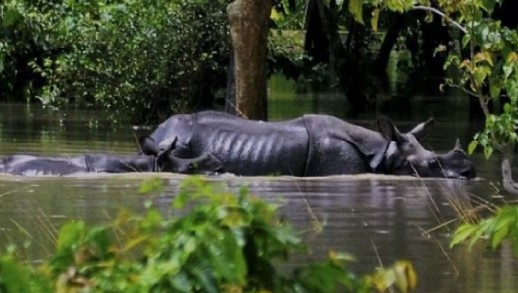Kaziranga National Park (KNP), famous for its diverse wildlife and endangered one-horned rhinoceroses, is facing its worst flood in ten years. The park, covering 1,090 square kilometres in Assam, recorded its highest water level of 87.47 metres at Nimatighat in Jorhat district on June 1, surpassing the 2017 record.
KNP director Sonali Ghosh reported that the floods have resulted in the deaths of 174 animals, including 10 one-horned rhinos. Hog deer have been the most affected, with 153 fatalities, mainly from drowning and some from vehicle collisions on the nearby highway.
“In 2017, we saw the park’s worst flood with 291 animal deaths, including 24 rhinos,” Ghosh noted. However, this year, forest personnel have managed to rescue 135 animals despite the challenging conditions.
Aranyak CEO and wildlife biologist Bibhab Kumar Talukdar highlighted the ecological importance of flooding. “While wildlife losses are troubling, floods are crucial for maintaining the park’s ecosystem and natural life cycle. They sustain wildlife, including rhinos along the Brahmaputra river,” he explained.
Although Kaziranga’s situation remains dire, Assam’s overall flood condition is improving. The latest bulletin from the Assam State Disaster Management Authority states that 13.99 lakh people across 2,545 villages in 26 districts are still affected, with 83 flood-related deaths reported this year.

















